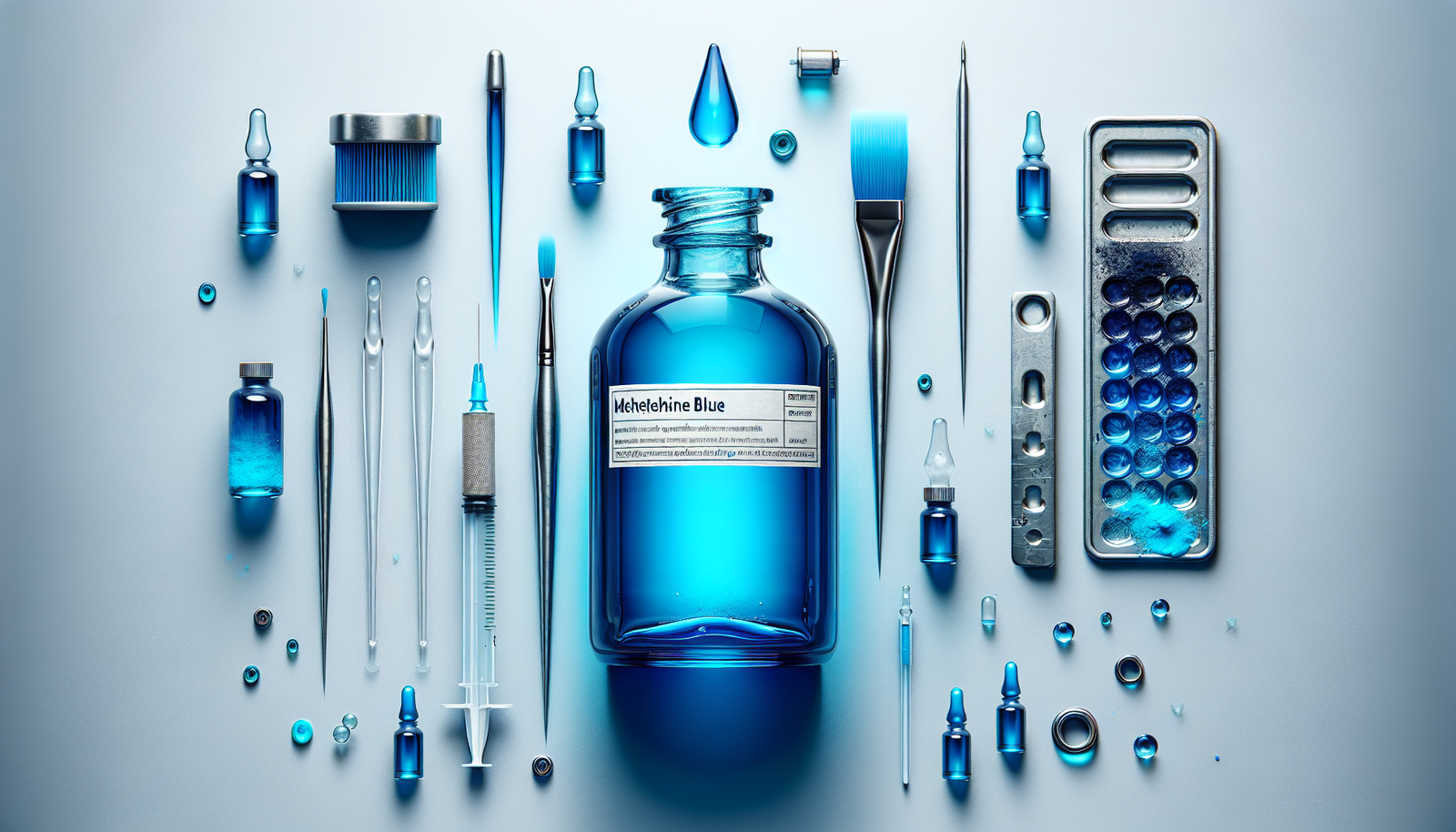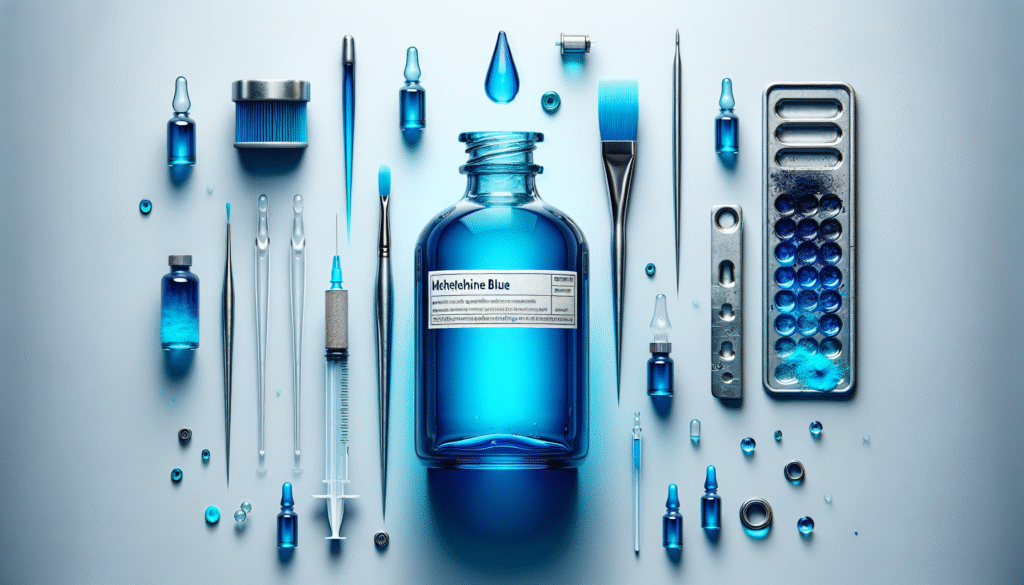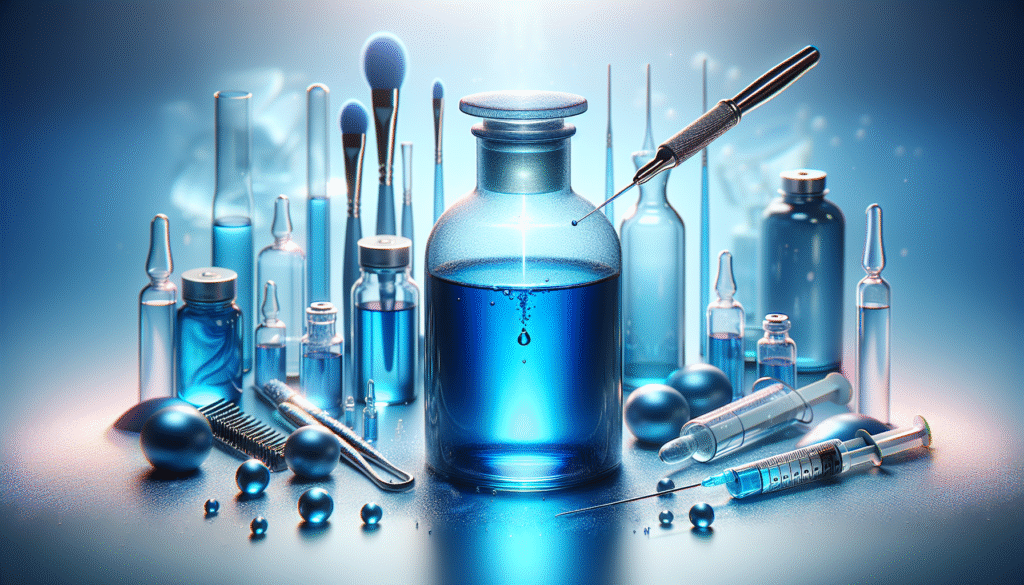
What innovative treatments are you familiar with that utilize unique compounds for aesthetic purposes? One such compound that has gained attention in recent years is methylene blue. Traditionally known for its use in various medical applications, methylene blue is now making waves in the world of aesthetics. This article will outline the innovative uses of methylene blue in aesthetic treatments, examining its applications, benefits, and potential future developments.
Understanding Methylene Blue
Methylene blue is a synthetic dye that has been used in medicine since the 19th century. Initially developed to treat conditions such as malaria and methemoglobinemia, it is now recognized for its properties as an antioxidant and a photosensitizer. These unique characteristics have opened up several avenues for its use in cosmetic and aesthetic treatments.
Historical Background
The history of methylene blue in medicine dates back to 1876 when it was first synthesized. Its uses have ranged from treating infections to enhancing imaging in diagnostic procedures. The recent resurgence of interest in methylene blue stems from its low toxicity and versatile therapeutic potential.
Chemical Properties
Methylene blue, or methylthioninium chloride, is a thiazine dye with rich blue pigmentation. Its structure allows it to accept and donate electrons easily, making it an effective antioxidant. This property is particularly advantageous in neutralizing free radicals that contribute to aging and skin damage.
Methylene Blue in Dermatology
The dermatological applications of methylene blue are among the most promising. Its antioxidant properties are beneficial in counteracting oxidative stress, which can accelerate skin aging.
Antioxidant Properties
Research has demonstrated that methylene blue can reduce oxidative stress by neutralizing reactive oxygen species (ROS). This reduction can lead to a healthier skin barrier and improved overall skin appearance.
Skin Rejuvenation
Facial treatments incorporating methylene blue have been shown to enhance skin rejuvenation. When used in combination with specific light therapies, methylene blue can facilitate collagen production, thus improving skin elasticity and reducing wrinkles.
| Property | Impact |
|---|---|
| Antioxidant | Reduces oxidative stress |
| Collagen Stimulation | Enhances skin firmness |
| Pigmentation Reduction | Improves skin tone |

Innovative Aesthetic Treatments
Recent advancements have led to several innovative aesthetic treatments utilizing methylene blue. Each of these treatments has its unique approach to enhancing skin appearance and overall patient satisfaction.
Methylene Blue in Laser Treatments
One notable application is its use as a photosensitizer in conjunction with laser treatments. When exposed to specific wavelengths of light, methylene blue can enhance the efficacy of laser therapy aimed at treating skin conditions such as acne scars, pigmentation issues, and more.
Mechanism of Action
The application of methylene blue prior to laser treatment allows for targeted absorption of light energy, promoting more effective tissue remodeling. The dye absorbs the light energy and converts it into heat, selectively damaging the targeted tissue while protecting surrounding healthy skin.
Combination with Microneedling
Microneedling has gained popularity in recent years for its ability to promote collagen production and improve skin texture. The incorporation of methylene blue in these microneedling procedures has added a new layer of effectiveness.
Enhanced Absorption
By introducing methylene blue into the skin during microneedling, practitioners can significantly increase the absorption of the dye’s antioxidant properties. This results in optimal skin rejuvenation while minimizing potential side effects.
Treatment for Stretch Marks
Another innovative application of methylene blue lies in its treatment for stretch marks. Combining microneedling with methylene blue provides a targeted approach to minimize the visibility of these skin imperfections.
Results
The results of such combined treatments have shown significant improvement in skin texture and elasticity, making stretch marks less pronounced. The antioxidant properties of methylene blue also facilitate healing and skin regeneration.
Safety and Efficacy
While the benefits of methylene blue in aesthetic treatments are compelling, it is essential to consider the safety profile and overall efficacy of such procedures.
Safety Profile
Methylene blue is generally well-tolerated, with few reports of adverse effects. As with any aesthetic procedure, potential side effects include temporary redness, swelling, or irritation at the injection site. A thorough consultation with a qualified practitioner is crucial to mitigate any risks.
Research Findings
Studies have demonstrated the efficacy of methylene blue in improving skin quality. For example, a clinical trial assessing its impact on acne scars revealed a significant reduction in scar visibility and improved patient satisfaction.

Future Directions in Aesthetic Medicine
The innovative use of methylene blue in aesthetic treatments opens the door to future developments in cosmetic medicine.
Increased Research and Development
As interest in methylene blue grows, further research will undoubtedly pave the way for more refined applications and improved treatment protocols. Investigating combination therapies that leverage methylene blue’s properties may lead to groundbreaking developments in aesthetic medicine.
Personalized Treatments
With the rise of personalized medicine, there is potential for the custom formulation of treatments that incorporate methylene blue’s benefits tailored to individual skin types and concerns. This move towards personalized care could enhance outcomes and patient satisfaction.
Conclusion
You are now equipped with a better understanding of the innovative uses of methylene blue in aesthetic treatments. From its history and chemical properties to its applications in laser treatments and microneedling, methylene blue represents a remarkable opportunity for enhancing skin health and wellness. Recognizing its potential in aesthetic medicine not only creates awareness but also fosters a culture of continual learning and improvement in treatment options.
This compound may well become a standard in aesthetic practices, offering you and other patients a pathway to rejuvenated, healthier skin. As research continues to unfold, it is an exciting time for those in aesthetic fields, emphasizing the importance of safe, effective, and scientifically supported treatments in your pursuit of beauty.